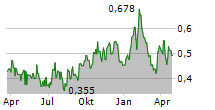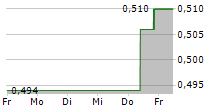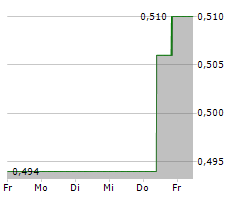
Drillhole WMA082-6 Intersected 9.6 metres at 14.9% U3O8 and Drillhole WMA082-4 Intersected 14.5 metres at 9.9% U3O8
Management Attending Investor Clubhouse at the RBC Open June 1, 2024
Vancouver, British Columbia--(Newsfile Corp. - May 29, 2024) - CanAlaska Uranium Ltd. (TSXV: CVV) (OTCQX: CVVUF) (FSE: DH7) ("CanAlaska" or the "Company") is pleased to report that it has received assay results from the drillholes completed on the Pike Zone during the winter of 2024. Geochemical assay results confirm composited high-grade intersections highlighted by WMA082-6 grading 14.9% U3O8 over 9.6 metres, and WMA082-4 grading 9.9% U3O8 over 14.5 metres. Drilling at the Pike Zone was completed as part of the ongoing winter exploration program on the West McArthur Joint Venture project (the "Project") in the eastern Athabasca Basin. The West McArthur project, a Joint Venture with Cameco Corporation, is operated by CanAlaska that holds an 83.35% ownership in the Project (Figure 1). CanAlaska is sole-funding the 2024 West McArthur program, further increasing its majority ownership in the Project.

Figure 1 - West McArthur Project Location
To view an enhanced version of this graphic, please visit:
https://images.newsfilecorp.com/files/2864/210867_8102c8d3e465f845_002full.jpg
CanAlaska CEO, Cory Belyk, comments, "Assay confirmation of the very high-grade uranium mineralization encountered at Pike Zone in the winter program is a critical step in evaluating the next steps for the project and the joint venture. The CanAlaska team will focus on expanding the known zone of unconformity-associated high-grade uranium during the upcoming summer drilling program scheduled to commence in early June. We remain confident Pike Zone is a potential tier one mineralizing event based on proven grade and thickness of uranium intersected at the unconformity, associated deep basement mineralized roots, and structure and alteration features observed in core at Pike Zone and elsewhere along the target corridor. Based on other eastern Athabasca Basin high-grade uranium deposit analogues such as McArthur River, Pike Zone could be just one of several pearls on a string."
2024 Winter Drill Program
The Company is pleased to announce completion of the 2024 winter drill program on the West McArthur project. The 2024 winter program was focused on continued expansion of the Pike Zone discovery and along strike unconformity testing to the northeast and southwest of the Pike Zone. During the drill program, eight unconformity target tests were completed for a total of 6,201 metres. All three drillholes (WMA082-4, WMA082-5, WMA082-6) completed on the Pike Zone intersected uranium mineralization. The mineralization in drillholes WMA082-4 and WMA082-6 represent the highest-grade mineralized intersections drilled to date on the West McArthur project.

Figure 2 - Pike Zone Winter 2024 Mineralized Drillhole Locations
To view an enhanced version of this graphic, please visit:
https://images.newsfilecorp.com/files/2864/210867_8102c8d3e465f845_004full.jpg
Geochemical assay results confirm that drillhole WMA082-4 intersected one main composited interval of 7.4% U3O8 over 19.5 metres, including 9.9% U3O8 over 14.5 metres, followed by several additional mineralization intervals down hole (Table 1). The mineralization in WMA082-4 is characterized by massive to semi-massive, blebby, disseminated, clay-hosted, and fracture-controlled uranium mineralization associated with yellow and orange uranium secondaries at the contact between the Athabasca sandstone and the underlying basement rocks. The mineralized intervals are hosted within a broad zone of intense clay and chlorite alteration, resulting in complete replacement of the original rock fabric and textures. Intervals of no core recovery, due to poor ground conditions, were intersected within the WMA082-4 mineralized intersection. In intervals of no core recovery, downhole radiometric equivalent uranium grades, calculated based on an updated radiometric equivalent grade curve that has been correlated against geochemical assay results obtained during the winter drill program, are inserted in place of missing core and reported as part of the larger composited interval (Table 1).
Geochemical assay results confirm that drillhole WMA082-6 intersected one main composited interval of 12.9% U3O8 over 11.1 metres, including 14.9% U3O8 over 9.6 metres, followed by an additional mineralized interval down hole (Table 2). The mineralization in WMA082-6 is hosted directly at the unconformity contact between the Athabasca sandstone and the underlying basement rocks and is characterized by massive to semi-massive and nodular uranium mineralization associated with yellow and orange uranium secondaries and hematite alteration. Uranium mineralization continues into the basement rocks of WMA082-6 and is characterized by nodular, disseminated, clay-hosted, foliation-controlled, and fracture-controlled veinlets of uranium mineralization associated with localized pale-yellow uranium secondaries and strong basement alteration. One interval of no core recovery was intersected within the WMA082-6 mineralized intersection. In this interval of no core recovery, downhole radiometric equivalent uranium grades, calculated based on an updated radiometric equivalent grade curve that has been correlated against geochemical assay results obtained during the winter drill program, are inserted in place of missing core and reported as part of the larger composited interval (Table 2).
Geochemical assay results confirm that drillhole WMA082-5 intersected one interval of sandstone-hosted uranium mineralization grading 1.5% U3O8 over 4.6 metres (Table 3). The mineralization in WMA082-5 is located directly above the unconformity contact between the Athabasca sandstone and underlying basement rocks. The mineralization in WMA082-5 is characterized by disseminated and nodular uranium mineralization hosted within a dark grey to black sulfide- and clay-altered sandstone column with localized intervals of lost core due to high rock friability. The basement of WMA082-5 immediately below the unconformity is strongly clay and chlorite altered, resulting in replacement of the original rock fabric textures. One interval of no core recovery was intersected within the WMA082-5 mineralized intersection. In this interval of no core recovery, downhole radiometric equivalent uranium grades, calculated based on an updated radiometric equivalent grade curve that has been correlated against geochemical assay results obtained during the winter drill program, are inserted in place of missing core and reported as part of the larger composited interval (Table 3).
This most recent drill fence on the Pike Zone is located approximately 30 metres along strike to the northeast of high-grade uranium mineralization intersected in WMA082-2, which intersected 1.03% U3O8 over 6.3 metres, including a sub-interval of 2.82% U3O8 over 1.9 metres (see News Release dated January 18, 2024). Currently, the unconformity target at the Pike Zone remains open in all directions around WMA082-4, WMA082-5, and WMA082-6 (Figure 2).
2024 Summer Drill Program and Next Steps
The Company is actively planning the 2024 summer drill program on the West McArthur project. The drill program is expected to start in early June and will consist of two diamond drills targeting approximately 9,000 metres of additional diamond drilling. The program is expected to be completed by September.
In addition, the Company has retained the services of Understood Mineral Resources Ltd ("Understood") of Saskatoon. With the assistance of Understood, the Company has generated an updated radiometric probe equivalent grade curve utilizing the geochemical assay confirmed intersections from the Pike Zone. This updated radiometric probe equivalent curve, which factors in the ultra high-grades intersected during the winter drill program, will allow for better defined equivalent uranium calculations of potential future high-grade intersections. Understood will also be providing the Company with geostatistical-based resource modelling services in preparation for a potential future resource calculation on the Pike Zone.
Table 1 - WMA082-4 Intersections with Geochemical Assay and Radiometric Equivalent Intervals
| WMA082-4 Intervals 1 | From (m) | To (m) | Length (m)7 | Average Grade | |
| (% U3O8) | (% eU3O8)8 | ||||
| Interval 1 (2) | 796.5 | 797.0 | 0.5 | 0.20 | |
| 797.0 | 797.3 | 0.3 | 1.4 | ||
| 797.3 | 799.0 | 1.7 | 2.1 | ||
| 799.0 | 802.2 | 3.2 | 30.9 | ||
| 802.2 | 803.0 | 0.8 | 3.6 | ||
| 803.0 | 808.5 | 5.5 | 3.6 | ||
| 808.5 | 809.5 | 1.0 | 9.8 | ||
| 809.5 | 812.5 | 3.0 | 2.4 | ||
| 812.5 | 814.0 | 1.5 | 0.9 | ||
| 814.0 | 816.0 | 2.0 | 0.2 | ||
| Composited Interval 1 (2,3) | 796.5 | 816.0 | 19.5 | 7.4 | |
| Including (4) | 797.0 | 797.3 | 0.3 | 1.4 | |
| Including (3,5) | 798.5 | 813.0 | 14.5 | 9.9 | |
| Interval 2 (6) | 822.6 | 827.5 | 4.9 | 0.9 | |
| Including (4) | 822.6 | 823.9 | 1.3 | 1.9 | |
| Including (4) | 824.7 | 825.2 | 0.5 | 2.3 | |
| Interval 3 (6) | 829.6 | 831.6 | 2.0 | 0.4 | |
| |||||
Table 2 - WMA082-6 Intersections with Geochemical Assay and Radiometric Equivalent Intervals
| WMA082-6 Intervals 1 | From (m) | To (m) | Length (m)6 | Average Grade | |
| (% U3O8) | (% eU3O8)7 | ||||
| Interval 1 (2) | 798.0 | 800.5 | 2.5 | 16.7 | |
| 800.5 | 809.1 | 8.6 | 11.9 | ||
| Composited Interval 1 (2,3) | 798.0 | 809.1 | 11.1 | 12.9 | |
| Including (4) | 798.9 | 808.5 | 9.6 | 14.9 | |
| Interval 2 (5) | 815.9 | 816.6 | 0.7 | 0.7 | |
| |||||
Table 3 - WMA082-5 Intersections with Geochemical Assay and Radiometric Equivalent Intervals
| WMA082-5 Intervals 1 | From (m) | To (m) | Length (m)5 | Average Grade | |
| (% U3O8) | (% eU3O8)6 | ||||
| Interval 1 (2) | 804.3 | 805.0 | 0.7 | 0.15 | |
| 805.0 | 808.9 | 3.9 | 1.7 | ||
| Composited Interval 1 (2,3) | 804.3 | 808.9 | 4.6 | 1.5 | |
| Including (4) | 806.4 | 808.4 | 2.0 | 3.2 | |
| |||||
Other News
The Company will have management representatives at the Investor Clubhouse at the RBC Open on June 1, 2024 in Hamilton, Ontario.
Geochemical Sampling Procedures and Use of Radiometric Equivalent Grades
All drill core samples from the 2024 program were shipped to the Saskatchewan Research Council Geoanalytical Laboratories (SRC) in Saskatoon, Saskatchewan in secure containment for preparation, processing, and multi-element analysis by ICP-MS and ICP-OES using total (HF:NHO3:HClO4) and partial digestion (HNO3:HCl), boron by fusion, and U3O8 wt% assay by ICP-OES using higher grade standards. Assay samples are chosen based on downhole probing radiometric equivalent uranium grades and scintillometer (SPP2 or CT007-M) peaks. Assay sample intervals comprise 0.3 - 0.8 metre continuous half-core split samples over the mineralized interval. Select density samples, comprising 0.1 metre continuous whole core samples that are subsequently split and assayed, may be taken within the mineralized interval. With all assay samples, one half of the split sample is retained and the other sent to the SRC for analysis. The SRC is an ISO/IEC 17025/2005 and Standards Council of Canada certified analytical laboratory. Blanks, standard reference materials, and repeats are inserted into the sample stream at regular intervals by CanAlaska and the SRC in accordance with CanAlaska's quality assurance/quality control (QA/QC) procedures. Geochemical assay data are subject to verification procedures by qualified persons employed by CanAlaska prior to disclosure.
During active exploration programs drillholes are radiometrically logged using calibrated downhole GeoVista NGRS and TGGS (Triple GM) gamma probes which collect continuous readings along the length of the drillhole. Preliminary radiometric equivalent uranium grades ("eU3O8") are then calculated from the downhole radiometric results. The probe is calibrated using an algorithm calculated from the calibration of the probe at the Saskatchewan Research Council facility in Saskatoon and from the comparison of probe results against geochemical analyses. At extremely high radiometric equivalent uranium grades, downhole gamma probes may become saturated, resulting in the probe being overwhelmed, which in turn can create difficulties in accurately determining extremely high-grade radiometric equivalent uranium grades. The equivalent uranium grades are preliminary and are subsequently reported as definitive assay grades following sampling and chemical analysis of the mineralized drill core. In the case where core recovery within a mineralized intersection is poor or non-existent, radiometric grades are considered to be more representative of the mineralized intersection and may be reported in the place of assay grades. Radiometric equivalent probe results are subject to verification procedures by qualified persons employed by CanAlaska prior to disclosure.
All reported depths and intervals are drill hole depths and intervals, unless otherwise noted, and do not represent true thicknesses, which have yet to be determined.
About CanAlaska Uranium
CanAlaska Uranium Ltd. (TSXV: CVV) (OTCQX: CVVUF) (FSE: DH7) holds interests in approximately 500,000 hectares (1,235,000 acres), in Canada's Athabasca Basin - the "Saudi Arabia of Uranium." CanAlaska's strategic holdings have attracted major international mining companies. CanAlaska is currently working with Cameco on the West McArthur JV project and Denison on the Moon Lake South JV project in the Eastern Athabasca Basin. CanAlaska is a project generator positioned for discovery success in the world's richest uranium district. The Company also holds properties prospective for nickel, copper, gold and diamonds. For further information visit www.canalaska.com.
The Qualified Person under National Instrument 43-101 Standards of Disclosure for Mineral Projects for this news release is Nathan Bridge, MSc., P. Geo., Vice-President Exploration for CanAlaska Uranium Ltd., who has reviewed and approved its contents.
On behalf of the Board of Directors
"Cory Belyk"
Cory Belyk, P.Geo., FGC
CEO, President and Director
CanAlaska Uranium Ltd.
Contacts:
Cory Belyk, CEO and President
Tel: +1.306.668.6900
Email: cbelyk@canalaska.com
General Enquiry
Tel: +1.306.668.6915
Email: info@canalaska.com
Neither TSX Venture Exchange nor its Regulation Services Provider (as that term is defined in the policies of the TSX Venture Exchange) accepts responsibility for the adequacy or accuracy of this release.
Forward-looking information
All statements included in this press release that address activities, events or developments that the Company expects, believes or anticipates will or may occur in the future are forward-looking statements. These forward-looking statements involve numerous assumptions made by the Company based on its experience, perception of historical trends, current conditions, expected future developments and other factors it believes are appropriate in the circumstances. In addition, these statements involve substantial known and unknown risks and uncertainties that contribute to the possibility that the predictions, forecasts, projections and other forward-looking statements will prove inaccurate, certain of which are beyond the Company's control. Readers should not place undue reliance on forward-looking statements. Except as required by law, the Company does not intend to revise or update these forward-looking statements after the date hereof or revise them to reflect the occurrence of future unanticipated events.

To view the source version of this press release, please visit https://www.newsfilecorp.com/release/210867
SOURCE: CanAlaska Uranium Ltd.




